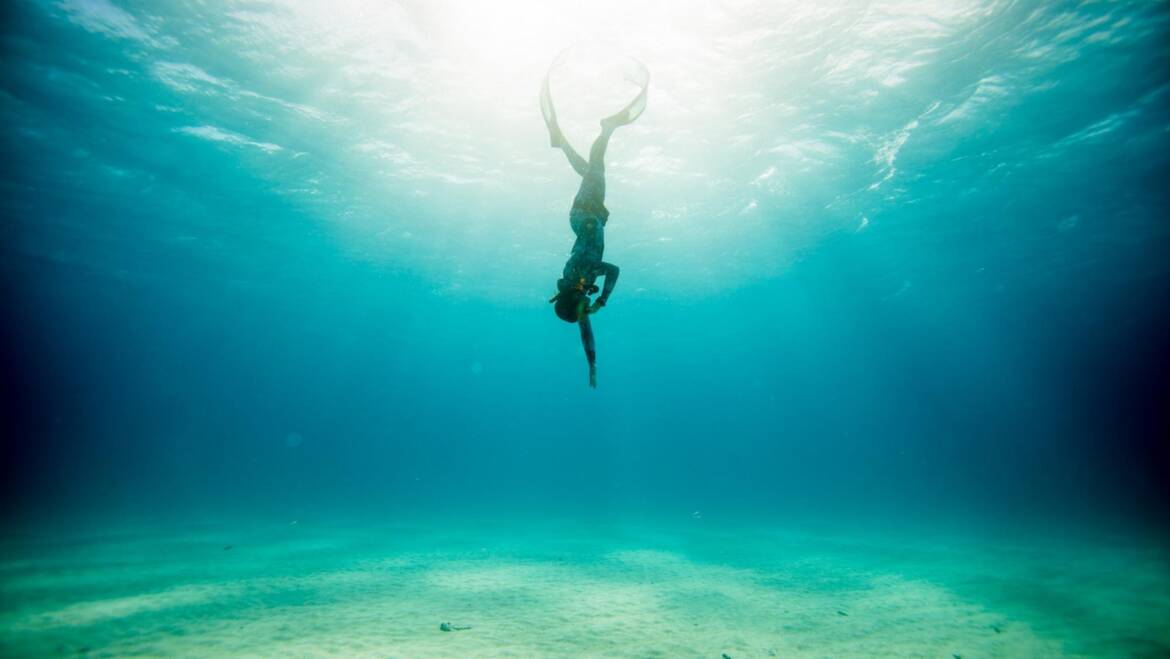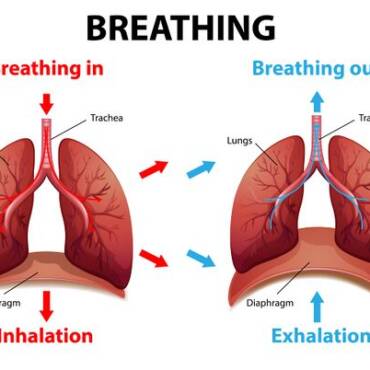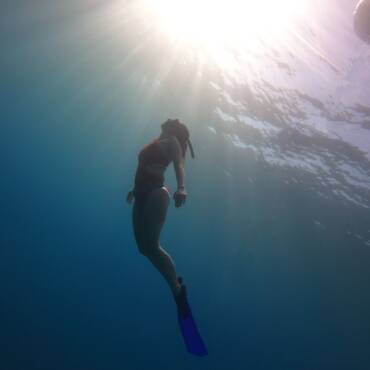If you ask a freediver what they would love to achieve the most, the answer would likely be…
“I want more! More oxygen to dive deeper and longer.”
That’s why some freedivers think about using a technique called lung packing to force more air into their lungs than is normally possible.
So what is lung packing?
Scientific explanation: Glossopharyngeal muscle contractions (‘lung packing’) [1] is a breathing technique used by some breath-hold divers to increase the volume of air in the lungs above total lung capacity (TLC), thereby increasing the volume of gas available for pressure equalization at great depth [2] and the amount of oxygen available.
In other words, lung packing is a method of inhaling more air than your resting lung capacity can hold.
End result? You may be able to dive deeper for longer.
Potential benefits of lung packing:
Having more air in your lungs may help you dive deeper for longer.
Besides this, lung packing may also:
- Increase lung capacity which makes it easier to equalize pressure at depth.
- Relaxes your airway.
- Increase overall performance by giving you more oxygen to work with.
How to lung pack:
Step 1: Relax Your Breathing
Begin by taking three deep and comfortable breaths. Then, adjust your breathing to its natural pace.
Step 2: Relax Your Mind
Engage in visualization techniques to create a sense of relaxation. Picture calming scenes such as gentle waves lapping against a boat or recall a joyful, warm, and tranquil memory. Alternatively, focus on being present in the moment by observing your surroundings or counting your breaths.
Step 3: Optional – Nose Seal
Although this step is optional, some freedivers find it helpful. Experiment with lung packing while both with and without a sealed nose. You can seal your nose by gently pinching it shut or, even better, using a specialized freediving nose clip.
Step 4: Deep Inhalation
Take a slow breath, starting from your abdomen. Once your abdomen feels full, pause briefly and then continue inhaling into your chest, expanding it fully to its maximum capacity.
Step 5: Throat Closure
To seal your throat, you need to perform two actions: close your glottis (the opening between your vocal cords) and close the back roof of your mouth. It is recommended to practice this step separately before attempting lung packing, allowing you to familiarize yourself with the technique.
Step 6: Create Negative Pressure
While keeping your throat closed, slightly open your mouth. Lower your jaw and move your tongue to the back of your mouth, creating a “vacuum” or negative pressure.
Step 7: Inhale the Air
Close your lips, open your throat, and swallow the air, allowing it to enter your lungs.
Step 8: Repeat Inhales
For beginners, start with a conservative approach. Perform three to five lung packs, or adjust the quantity based on what feels most comfortable and appropriate for you.
Step 9: Exhale
Exhale completely, releasing all the air from your lungs. If you are practicing in water, ensure you have a safety diver or a freediving instructor present in case any mistakes occur and to prevent blackout incidents.
Should every freediver do it?
Lung packing gives experienced freedivers a slight edge – but if you’re just starting out and haven’t learned the basics yet, packing won’t do you much good.
If you’re a beginner freediver the first thing you should do is work on your basics – such as boosting your breath-hold times. I’ll write a separate post on that soon.
It’s only when you’ve mastered this that you should think of moving on to advancing breath-holding techniques like lung packing.
Can lung packing have detrimental consequences?
Lung packing can make your heart work less effectively. This means that the amount of blood pumped by your heart, called cardiac output, and the amount of blood pumped with each beat, called stroke volume, can both decrease.
To prevent you from feeling dizzy or fainting, your body releases adrenaline, which makes your heart beat faster again.
But when your heart beats faster, your body uses up more oxygen. This can be a problem because it can make your dive time shorter.
So, even though lung packing may seem helpful, it can actually work against you by using up more oxygen and making your dives shorter.
What do researchers say?
Researchers performed tests on a 40-year-old, non-smoking female (1.75 m, 62 kg, BMI 20 kg/m2) who performed competitive breath hold (BH) diving for about 3 years holding several national records [3].
They performed cardiac MRI measurements at rest and after a breath hold with subsequent 2 min apnea following glossopharyngeal insufflations.
During apnea her heart rate increased from 50 to 66/min. The stroke volume when breathing normally was 92 ml.
After glossopharyngeal insufflation and at the end of apnea, stroke volume was decreased to 48 ml.
Hence, cardiac output was decreased by almost one third (4.6 l/min to 3.2 l/min).
At the end of apnea, both right and left ventricular volumes were significantly reduced, likely due to both reduced venous return and increased intrapulmonary pressure.
In simpler terms:
During apnea (breath-hold), the woman’s heart rate increased from 50 beats per minute to 66 beats per minute.
The amount of blood pumped with each beat, called stroke volume, was 92 milliliters when breathing normally. But after glossopharyngeal insufflation (glossopharyngeal breathing) and at the end of apnea, her stroke volume decreased to 48 milliliters.
This means that less blood was pumped with each beat. So, the total amount of blood pumped by her heart (the cardiac output), became about one-third less. It went from 4.6 liters per minute to 3.2 liters per minute.
Both the right and left sides of her heart had less blood inside them at the end of her breath-hold, probably because less blood returned to the heart and the pressure inside her lungs increased.
Please Note: We’re not doctors. So if you’re considering lung packing as an option to increase your breath-hold times, please consult a doctor or medical professional first.
If you want to know how to increase lung volume and efficiency, read this blog post: https://www.apneazone.club/a-freedivers-dream/
References:
[1] https://www.ncbi.nlm.nih.gov/pmc/articles/PMC4681964/#bib2
[2] https://www.ncbi.nlm.nih.gov/pmc/articles/PMC4681964/#bib4
[3] https://www.ncbi.nlm.nih.gov/pmc/articles/PMC4681964/
[4]https://apnealogy.com/what-is-lung-packing-the-secret-edge-freedivers-use-to-go-deeper/





Add Comment